The elegant feel of bay windows and the fact that they let natural light enter the room completely unhindered have rightfully placed them in people’s minds as an architectural treat!
Bay window treatments not only draw all attention to the graceful feature but also provide control of this richness of sunlight, to a certain extent, depending on your specific preferences. Here are five different approaches and styles you can adopt to treat your bay windows.
Before you begin, it is important to decide the approach you want to take to dressing your windows. Will you treat them as a single unit, separate pieces or each window individually? Once you have sorted that one out, the rest is easy!
1. A Single Unit: Variation 1
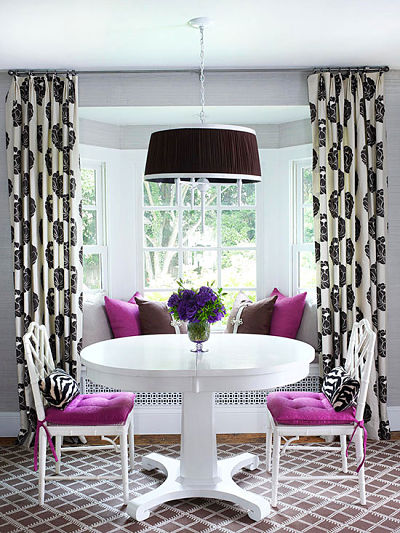
In the photo, you see the curtains hanging outside the bay, surrounding a radiator. This is because the windows are treated as a large unit. The radiator is topped by a built-in, cushioned bench, leaving plenty of header space right above the windows to have a plain, long curtain rod for majestic floor-to-ceiling panels.
When the curtains are closed, they act as a fanciful backdrop for the coffee table, turning the bench into a warm and comfortable area.
When open, they are a fine decorative piece, framing the window seat and the lovely view outside. This is usually the least expensive option and looks great when you have a window bench where you have window seat cushions like in the photo above.
2. A coordinated Unit: Variation 2
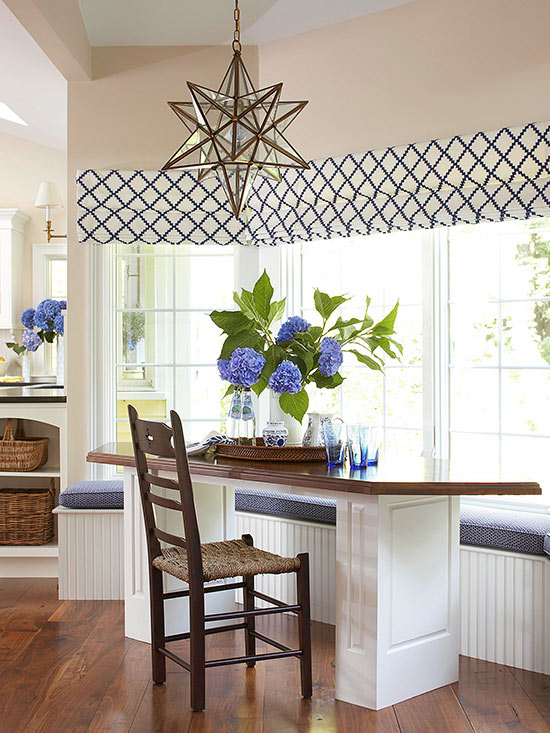
This is another way to treat windows as a single unit, where you have an individual treatment per window that conjoins. Take, for example, the windows in unison, as shown in the photo. The Roman shades are mounted outside the moulding of the window and have different sizes to fit comfortably next to one another.
That way, they fit each window differently, yet you get a feeling of melding all of them together. The same effect can be achieved not only with Roman blinds but with any style of shades you like (e.g. cellular or rattan), provided you mount them outside the window’s moulding.
Also, you should make sure they meet the edges for an eye-pleasing result. Alternatively, you may want to use a long valance stretching the window’s tops or café curtains spanning across the midsections of the windows.
3. Separate Pieces
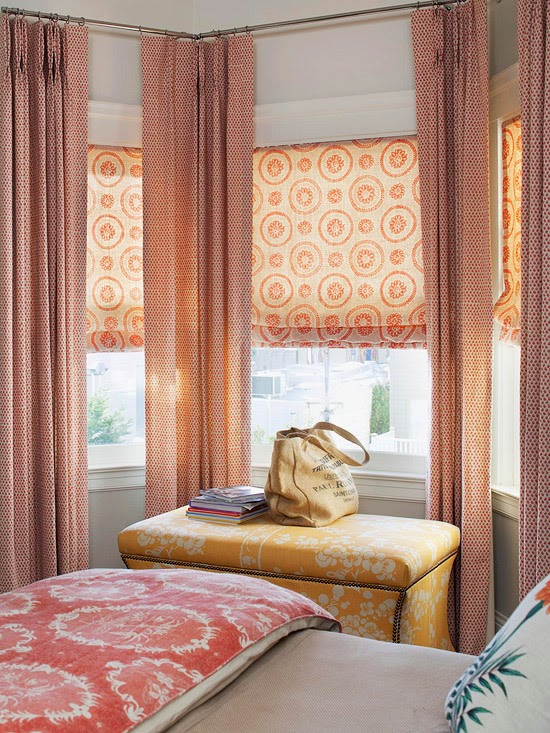
When you treat your bay windows as separate pieces, you can expect every individual window to have its own treatment. Don’t be intimidated by the fact that the treatments have to be mounted inside the bay; they will work in perfect harmony, for sure.
In the photo, there is a single angled curtain rod specially made to fit the inside of the bay. It crowns the bay windows and supports floor-length patterned curtain panels. In this case, there is no built-in seating that could hinder the panels.
However, if we had a bay window like the one in the previous photo (with the built-in bench), the curtains would have to be hemmed at an appropriate length to accommodate the seating. You can also see that you can get privacy control per individual window.
Now, if you wanted something slightly different and more towards infusing softness and highlighting pattern, you could use only two slender panels, rather than full curtains, and flank the window bay (either side). This option, though, does not allow you much privacy.
4. Individual Windows
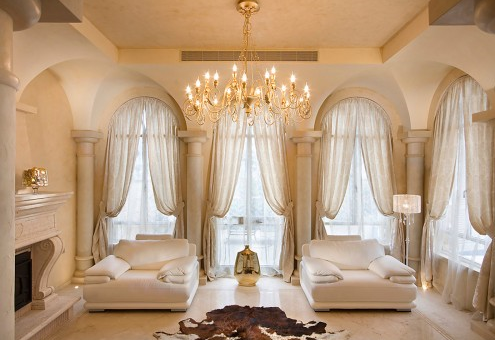
This treatment is the exact opposite of the one used before. This approach wants the treatments per window to be mounted inside the moulding of the window rather than outside.
In addition, the treatments rest within the window frame without touching the edges, like in previous treatments. See the example in the photo. The windows are spaced slightly apart, which makes opting for individual treatment reasonable, and the curtains are installed inside the moulding. The treatments are identical, and that is the secret to the uniform appearance of the window bays.
You could adjust this treatment to any window, e.g. your kitchen window, and accentuate its architecture by covering the bottom of each window with plantation shutters and covering the window’s top portion with a pleated valance (always within the trims’ boundaries).
5. Blinds, Curtains, Shades, Drapes & Shutters
Using blinds is the simplest form (and the most cost-effective) of bay window treatments, especially when you want something simple. Mild or even total white blinds are ideal, given that these colours allow more natural light into your room.
Large curtains make great bay window treatments, mainly due to their versatility and the wide range of designs, colours and designer fabrics. If you carefully match the curtains with your interiors, the result is outstanding!
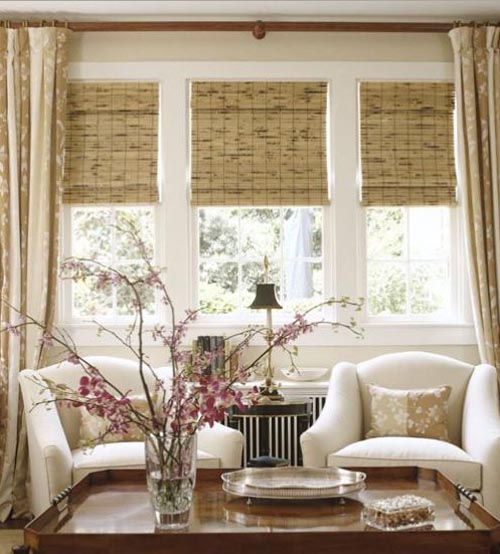
If you want to enjoy a large bay window, then shades will provide you with exactly this kind of provision. Roman shades or any light-coloured ones will diffuse the sunlight entering your room and infuse an overall gracious appeal to the house.
Now, for those who want a more powerful look for their home, drapes will do the trick. Thanks to their elegance and plethora of materials, designs, and colours to choose from, bay window treatments made from drapes will give your room the sophistication you desire.
Finally, installing shutters is an excellent option that will give your place a more classic look. Just make sure they blend with the rest of the room where they are to be placed, and pick the colors wisely. The most preferred ones are brown or white coloured ones, but that’s totally dependent on your personal taste and style. Bay window treatments are not a very easy DIY task, which is why asking for professional help is advised.